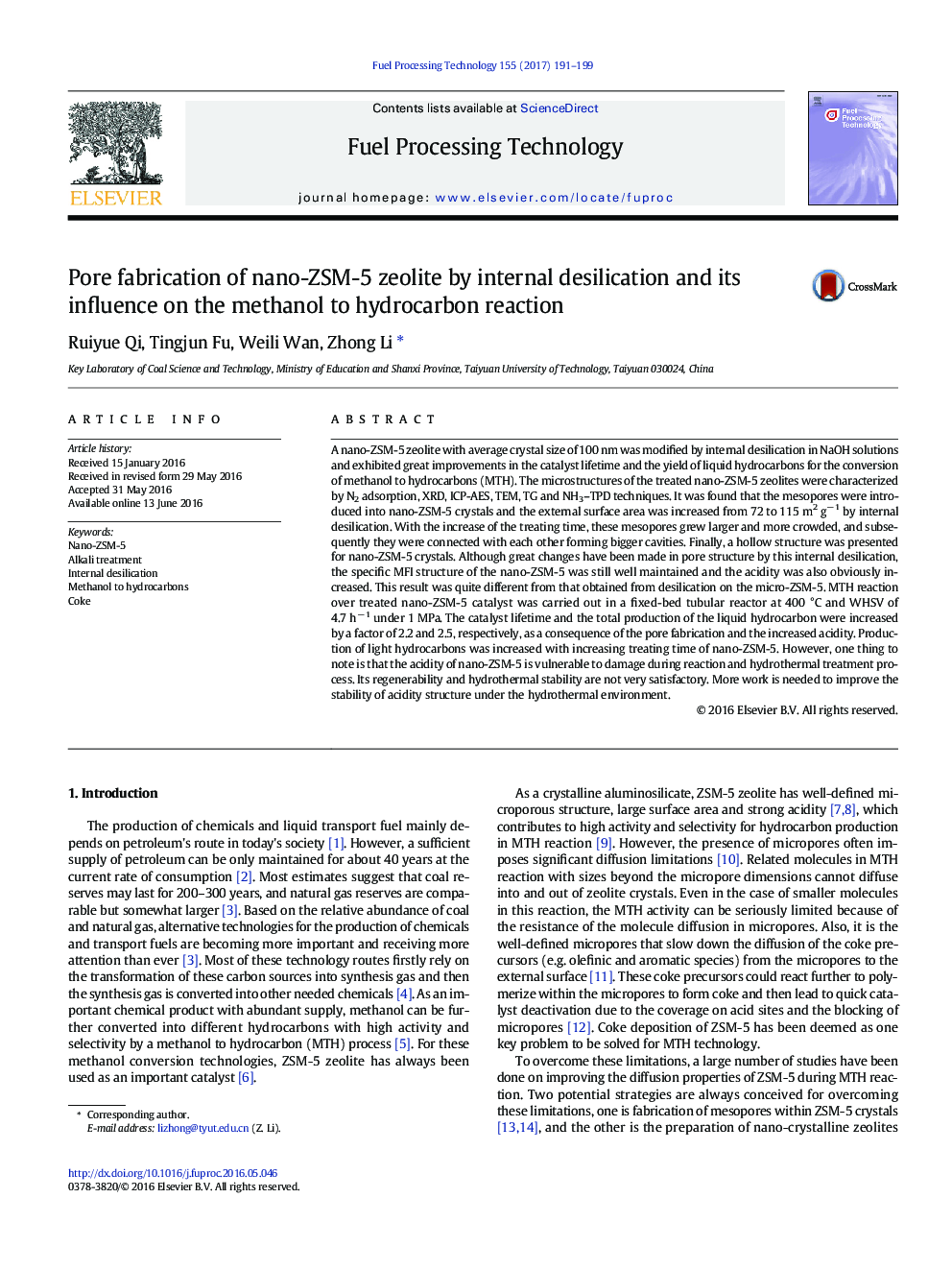| کد مقاله | کد نشریه | سال انتشار | مقاله انگلیسی | نسخه تمام متن |
|---|---|---|---|---|
| 4907151 | 1425391 | 2017 | 9 صفحه PDF | دانلود رایگان |

- Pore fabrication of nano-ZSM-5 was realized by internal desilication of crystals.
- Internal desilication by alkaline treatment increased the acidity of nano-ZSM-5.
- Internally desilicated nano-ZSM-5 showed good stability over 220 h at WHSV = 4.7 hâ 1.
- Production of light hydrocarbons increased with increasing treatment time of nano-ZSM-5.
A nano-ZSM-5 zeolite with average crystal size of 100 nm was modified by internal desilication in NaOH solutions and exhibited great improvements in the catalyst lifetime and the yield of liquid hydrocarbons for the conversion of methanol to hydrocarbons (MTH). The microstructures of the treated nano-ZSM-5 zeolites were characterized by N2 adsorption, XRD, ICP-AES, TEM, TG and NH3-TPD techniques. It was found that the mesopores were introduced into nano-ZSM-5 crystals and the external surface area was increased from 72 to 115 m2 gâ 1 by internal desilication. With the increase of the treating time, these mesopores grew larger and more crowded, and subsequently they were connected with each other forming bigger cavities. Finally, a hollow structure was presented for nano-ZSM-5 crystals. Although great changes have been made in pore structure by this internal desilication, the specific MFI structure of the nano-ZSM-5 was still well maintained and the acidity was also obviously increased. This result was quite different from that obtained from desilication on the micro-ZSM-5. MTH reaction over treated nano-ZSM-5 catalyst was carried out in a fixed-bed tubular reactor at 400 °C and WHSV of 4.7 hâ 1 under 1 MPa. The catalyst lifetime and the total production of the liquid hydrocarbon were increased by a factor of 2.2 and 2.5, respectively, as a consequence of the pore fabrication and the increased acidity. Production of light hydrocarbons was increased with increasing treating time of nano-ZSM-5. However, one thing to note is that the acidity of nano-ZSM-5 is vulnerable to damage during reaction and hydrothermal treatment process. Its regenerability and hydrothermal stability are not very satisfactory. More work is needed to improve the stability of acidity structure under the hydrothermal environment.
Journal: Fuel Processing Technology - Volume 155, January 2017, Pages 191-199